Abstract
Four children with congenital hypoplastic anemia (Diamond-Blackfan syndrome) and 30 control children with normal erythropoiesis were studied by a cell culture method in which human marrow, grown in a plasma clot, responds to added erythropoietin (EPO) with the appearance of discrete colonies of nucleated erythroid cells. The colonies arise from EPO-responsive stem cells and are not related to the number of morphologically identifiable marrow erythroids plated. Results of studies on control marrow indicated that without EPO there was little or no colony formation. Increasing EPO doses or nucleated marrow cells per culture resulted in a linear increase in colony numbers. The optimal EPO concentration of 2.5 U/ml yielded a mean of 158 +/- 79 colonies/1 x 10(5) nucleated cells on day 7 of incubation. Even in the absence of recognizable erythroids, marrows of all four patients with anemia grew erythroid colonies. Two patients on no therapy had decreased colony numbers. The other two, on prednisone, had normal numbers. Sera from patients did not inhibit colony formation from either autologous or control marrow. In contrast, serum from an adult with acquired pure red cell aplasia produced striking inhibition of colony growth. It appears that the red cell failure in this disorder is not due to an absence of erythroid stem cells, and a serum inhibitor to erythropoiesis as seen in the acquired disease is unlikely.
Full text
PDF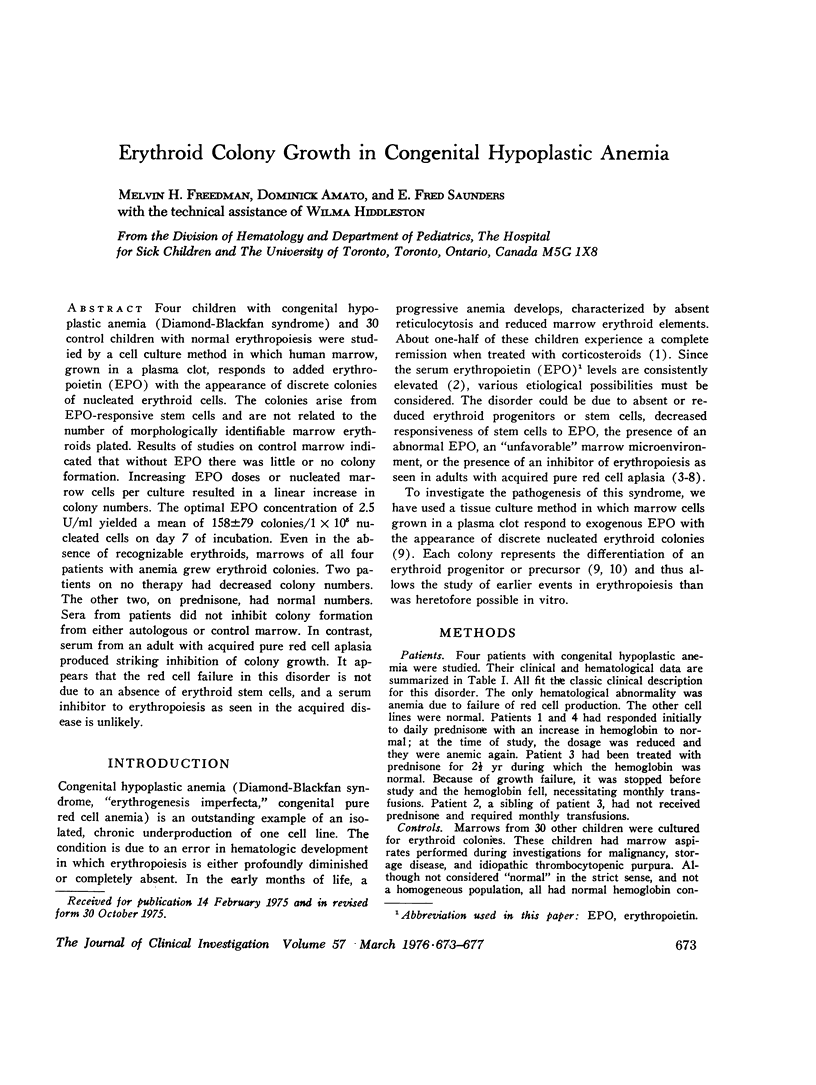
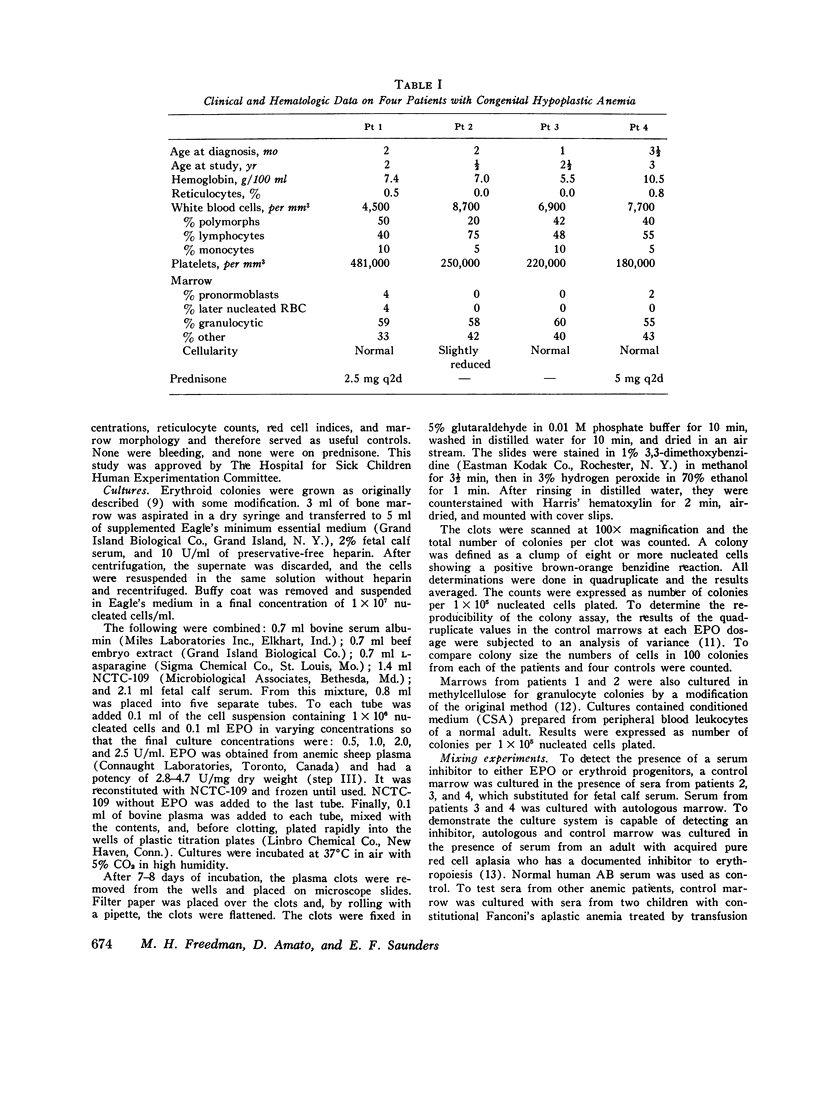
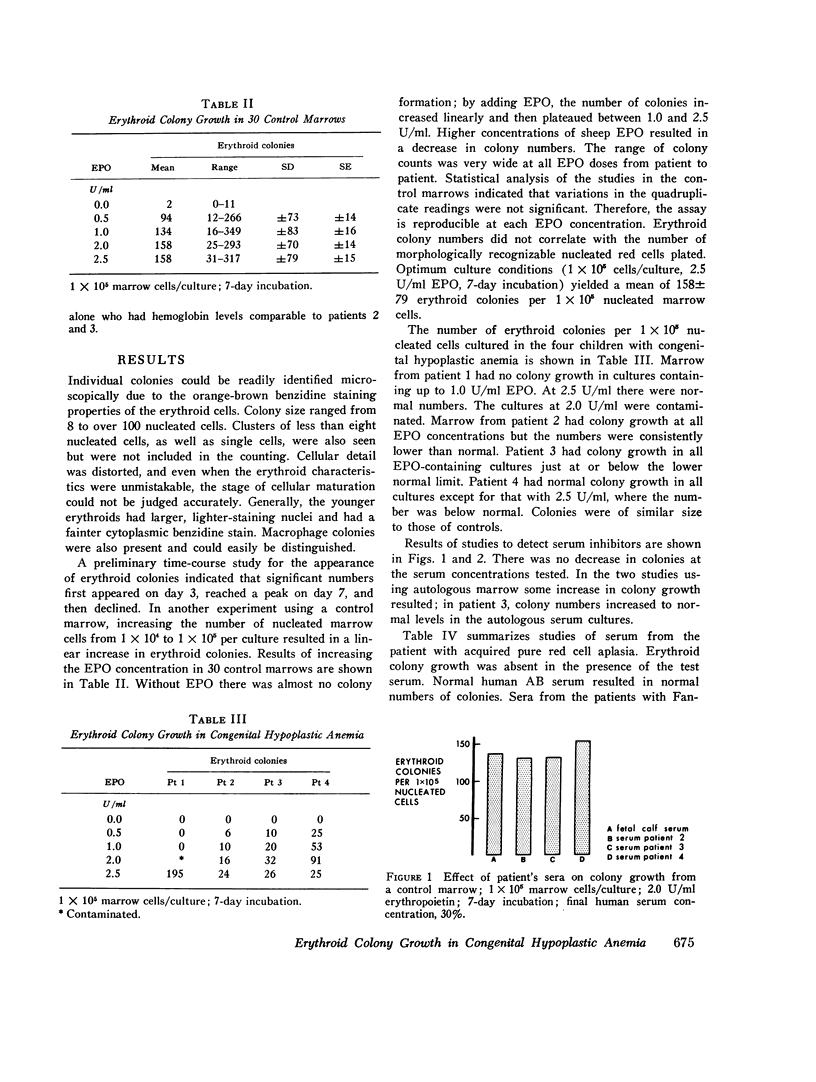
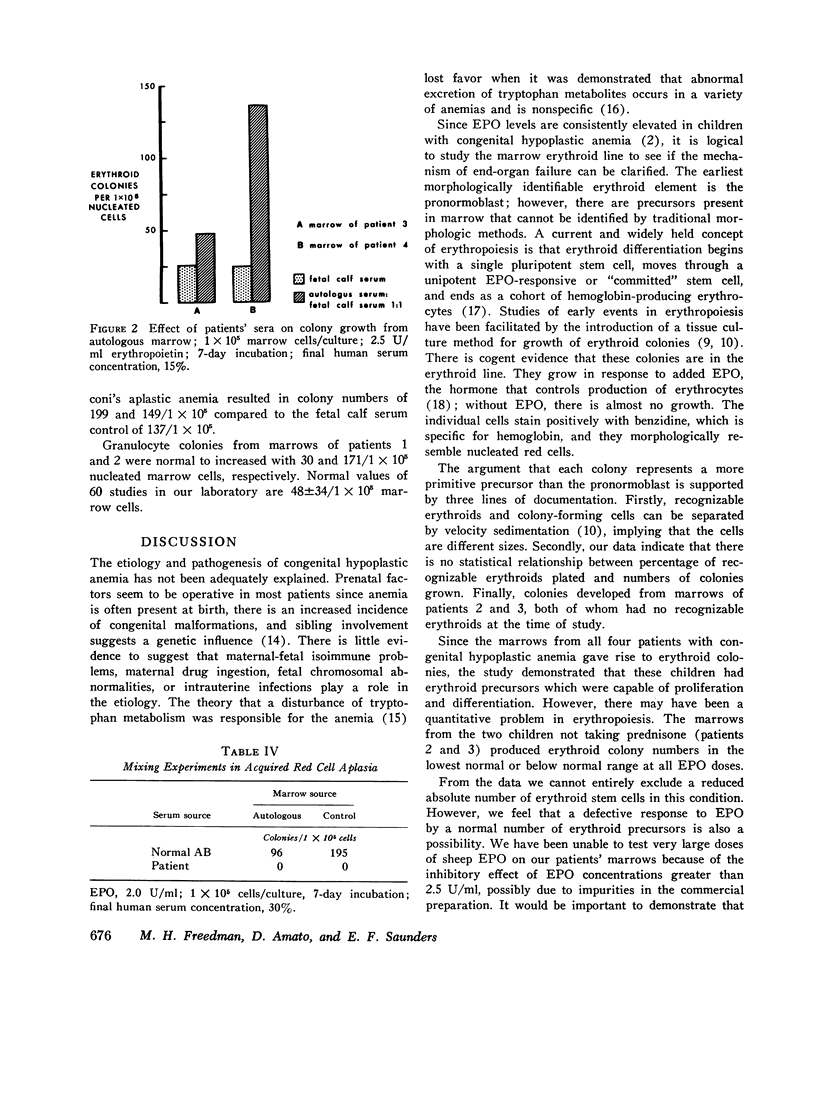
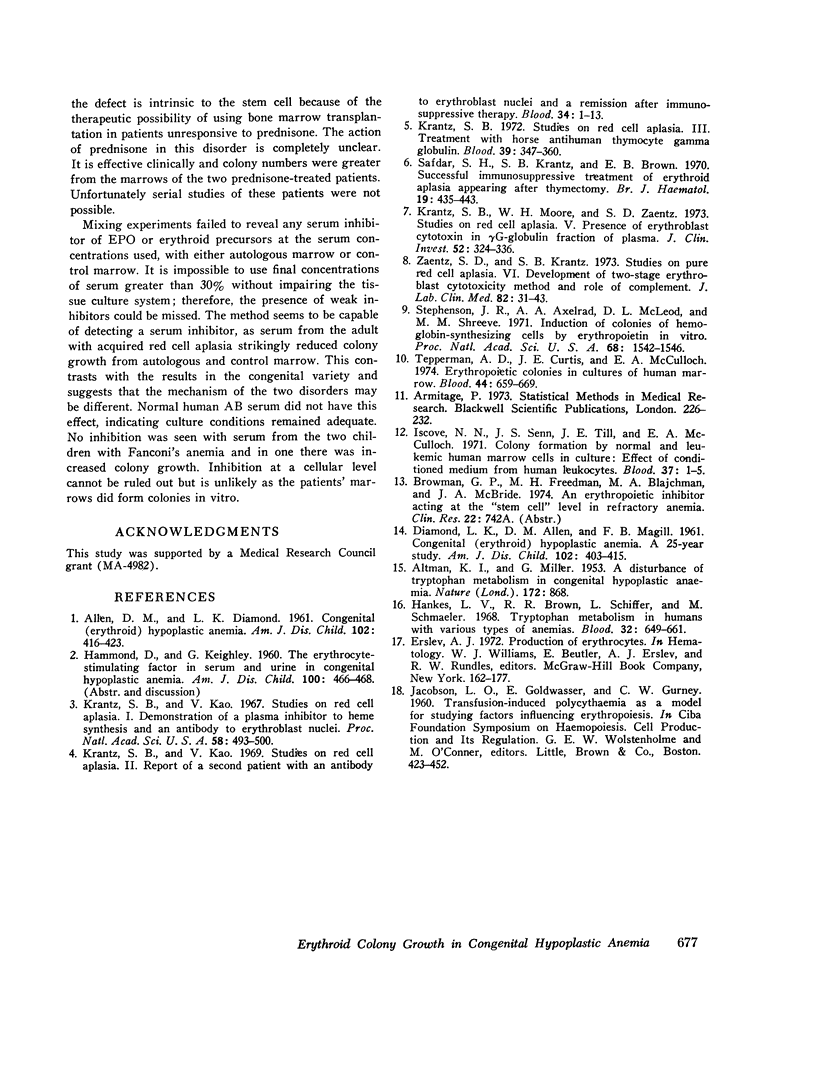
Selected References
These references are in PubMed. This may not be the complete list of references from this article.
- ALLEN D. M., DIAMOND L. K. Congenital (erythroid) hypoplastic anemia: cortisone treated. Am J Dis Child. 1961 Sep;102:416–423. doi: 10.1001/archpedi.1961.02080010418021. [DOI] [PubMed] [Google Scholar]
- ALTMAN K. I., MILLER G. A disturbance of tryptophan metabolism in congenital hypoplastic anaemia. Nature. 1953 Nov 7;172(4384):868–868. doi: 10.1038/172868a0. [DOI] [PubMed] [Google Scholar]
- DIAMOND L. K., ALLEN D. M., MAGILL F. B. Congenital (erythroid) hypoplastic anemia. A 25-year study. Am J Dis Child. 1961 Sep;102:403–415. doi: 10.1001/archpedi.1961.02080010405019. [DOI] [PubMed] [Google Scholar]
- Hankes L. V., Brown R. R., Schiffer L., Schmaeler M. Tryptophan metabolism in humans with various types of anemias. Blood. 1968 Oct;32(4):649–661. [PubMed] [Google Scholar]
- Krantz S. B., Kao V. Studies on red cell aplasia. I. Demonstration of a plasma inhibitor to heme synthesis and an antibody to erythroblast nuclei. Proc Natl Acad Sci U S A. 1967 Aug;58(2):493–500. doi: 10.1073/pnas.58.2.493. [DOI] [PMC free article] [PubMed] [Google Scholar]
- Krantz S. B., Kao V. Studies on red cell aplasia. II. Report of a second patient with an antibody to erythroblast nuclei and a remission after immunosuppressive therapy. Blood. 1969 Jul;34(1):1–13. [PubMed] [Google Scholar]
- Krantz S. B., Moore W. H., Zaentz S. D. Studies on red cell aplasia. V. Presence of erythroblast cytotoxicity in G-globulin fraction of plasma. J Clin Invest. 1973 Feb;52(2):324–336. doi: 10.1172/JCI107188. [DOI] [PMC free article] [PubMed] [Google Scholar]
- Krantz S. B. Studies on red cell aplasia. 3. Treatment with horse antihuman thymocyte gamma globulin. Blood. 1972 Mar;39(3):347–360. [PubMed] [Google Scholar]
- Safdar S. H., Krantz S. B., Brown E. B. Successful immunosuppressive treatment of erythroid aplasia appearing after thymectomy. Br J Haematol. 1970 Oct;19(4):435–443. doi: 10.1111/j.1365-2141.1970.tb06971.x. [DOI] [PubMed] [Google Scholar]
- Stephenson J. R., Axelrad A. A., McLeod D. L., Shreeve M. M. Induction of colonies of hemoglobin-synthesizing cells by erythropoietin in vitro. Proc Natl Acad Sci U S A. 1971 Jul;68(7):1542–1546. doi: 10.1073/pnas.68.7.1542. [DOI] [PMC free article] [PubMed] [Google Scholar]
- Tepperman A. D., Curtis J. E., McCulloch E. A. Erythropietic colonies in cultures of human marrow. Blood. 1974 Nov;44(5):659–669. [PubMed] [Google Scholar]
- Zaentz S. D., Krantz S. B. Studies on pure red cell aplasia. VI. Development of two-stage erythroblast cytotoxicity method and role of complement. J Lab Clin Med. 1973 Jul;82(1):31–43. [PubMed] [Google Scholar]


